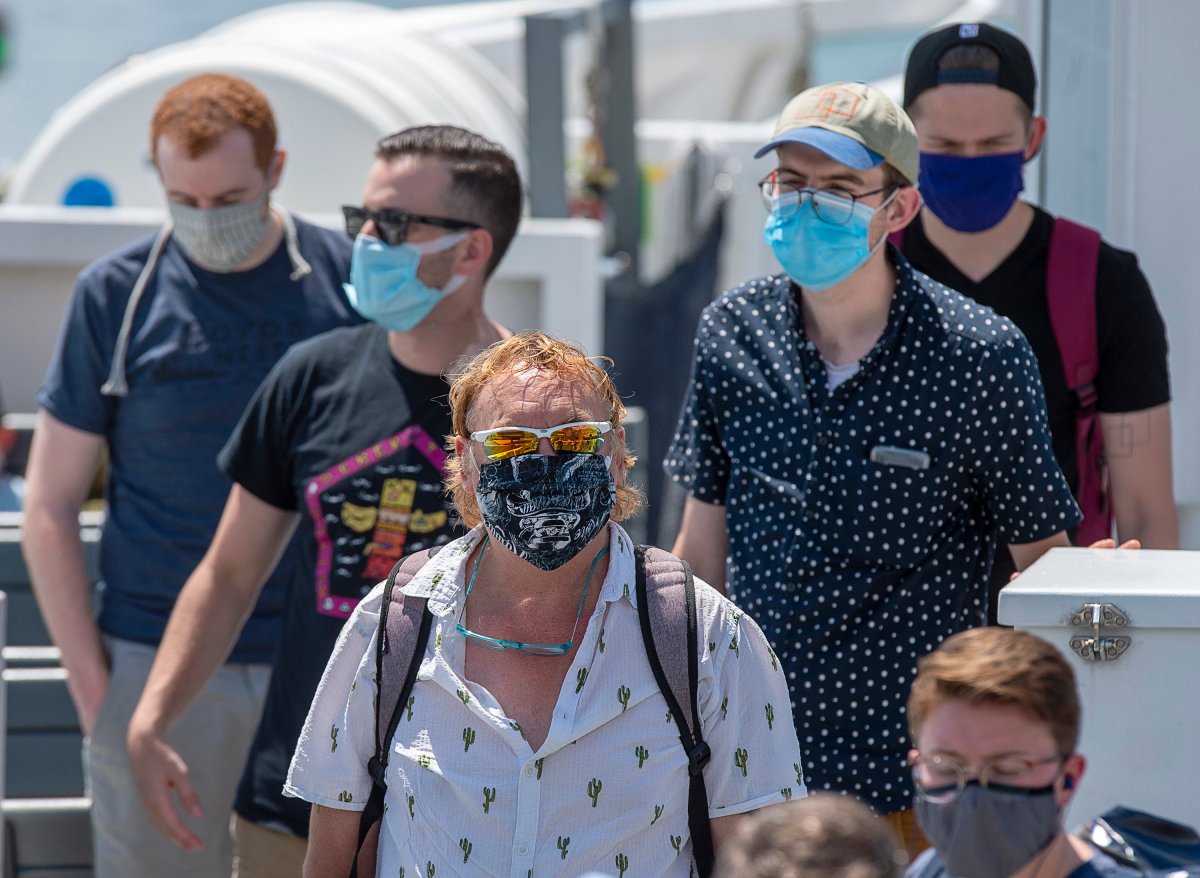Scientists find coronavirus in the air — but experts say this won’t yet change how we fight it

The novel coronavirus can be found in tiny droplets that float in the air, a new study showed this week.
But while that sounds alarming, experts say there are many questions that need to be answered before we radically change our understanding of how the coronavirus spreads.
In this new study, published ahead of peer review, researchers in Florida sampled the air in the hospital rooms of two COVID-19 patients, one of whom still had an active infection. They collected viable virus from air two to 4.8 metres away from the infected individuals.
“Our virus isolation work provides direct evidence that SARS-CoV-2 in aerosols can be viable and thus pose a risk for transmission of the virus,” the authors wrote.
“These findings strengthen the notion that airborne transmission of viable SARS-CoV-2 is likely and plays a critical role in the spread of COVID-19.”
Others aren’t so sure.
“Can there be airborne transmission? I’m sure there probably can,” said Dr. Isaac Bogoch, an infectious diseases specialist at Toronto General Hospital. “It’s probably just not accounting for the vast majority of transmission.”
What is airborne transmission?
The virus is thought to be spread by tiny water droplets produced when a person speaks, sneezes or coughs, Bogoch said. Larger drops don’t tend to spread very far, and quickly fall to the ground. This is what infectious disease specialists call “droplet transmission.”
Smaller droplets are light enough that they can linger in the air and tend to travel longer distances, he said. This is what scientists usually call “airborne transmission.”
It’s not an either/or equation though, he said.
“We talk about them like this is a dichotomy as in something is either droplet or airborne. Of course, we know it’s not a dichotomy. There’s a spectrum between these smaller particles and these larger particles.”
[ Sign up for our Health IQ newsletter for the latest coronavirus updates ]
It’s hard to say how much virus is in these tiny droplets, and whether it’s actually enough to give people COVID-19, he said, but he thinks it’s likely a rare event.
When infectious disease doctors use the term “airborne transmission,” said Dr. Susy Hota, medical director of infection prevention and control at the University Health Network, they’re “making a very specific statement that this is a disease that we believe is primarily transmitted through small aerosols that are quite buoyant and can travel long distances. So if you’re in the same room as a person with this illness, there is a chance that you can get it.”
The classic example of an airborne disease is measles, she said, which is so infectious that if an infected person is in a room, someone else walking into that room can catch the virus hours after the infected person left.
So far, when they look at case clusters of COVID-19 infections, doctors just haven’t seen much evidence that this happens often, said Dr. Sumon Chakrabarti, an infectious disease specialist at Trillium Health Partners in Mississauga.
“What are we seeing in these outbreaks? Over and over and over again, what we’re seeing is that people who are huddled together in close proximity for a prolonged period of time. So, factories, schools,” he said.
A recent study found that even among people who lived in the same house, there was only a one-in-five chance that another member of the household would catch it, he said. If it spread easily through the air, he would expect that number to be higher, he said.
Some are more concerned: a group of scientists warned the World Health Organization to pay more attention to this possibility, and in response, the WHO said that “evidence is emerging” that this is possible.
There have been examples of possible airborne transmission, too: case studies have identified places like a busy restaurant and a choir practice as places this may have occurred, though the Centers for Disease Control believes that droplets might also have accounted for these outbreaks.
Bogoch just doesn’t think the airborne route is the major way this virus gets transmitted.
“I wouldn’t say that that proves that it’s airborne. I say, you’ve got a lot of people in close proximity singing in an indoor environment like that. That’s a great way to transmit it.”
Concerns about ventilation are valid, though, Hota said, when it comes to closed indoor environments.
“Where we agree is, yeah, these aerosols exist. If you’re in a room where these aerosols are circulating for a long period of time and the ventilation is poor… your risk might be higher in that setting. So ventilation is important. We should be optimizing that for COVID.”
Fundamentally, though, the general advice remains the same, Bogoch said.
“Put a mask on when you’re in an indoor environment. Spread apart by two metres. Try to have as good air circulation as you can in indoor environments.”



No comments:
Post a Comment
Comments always welcome!